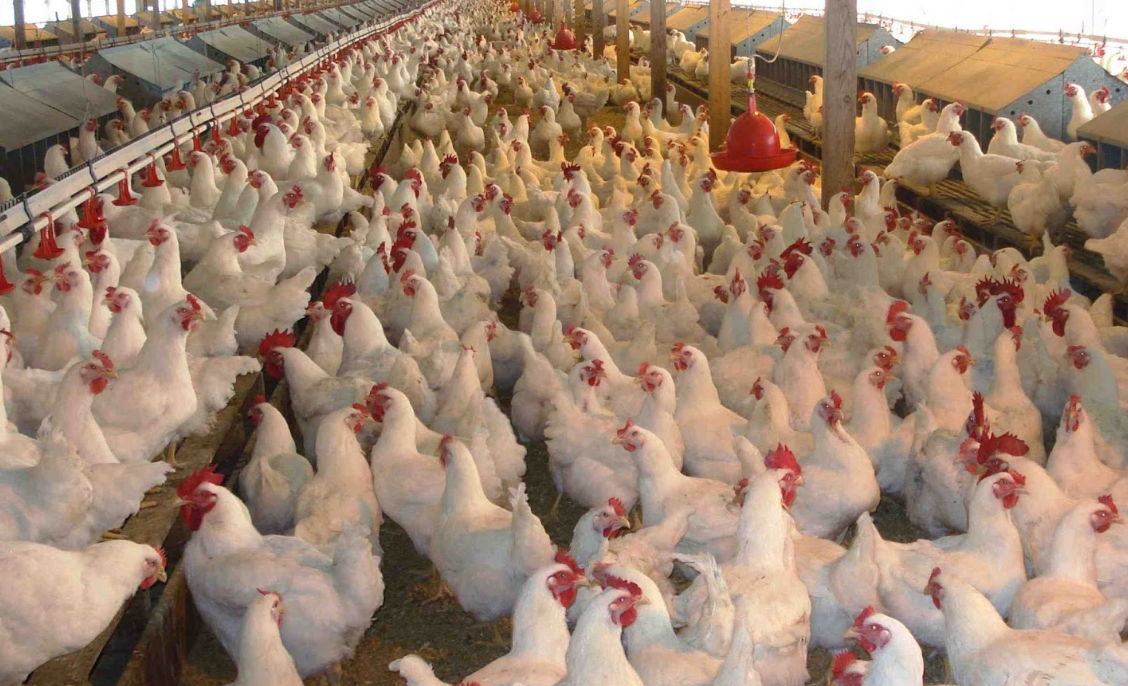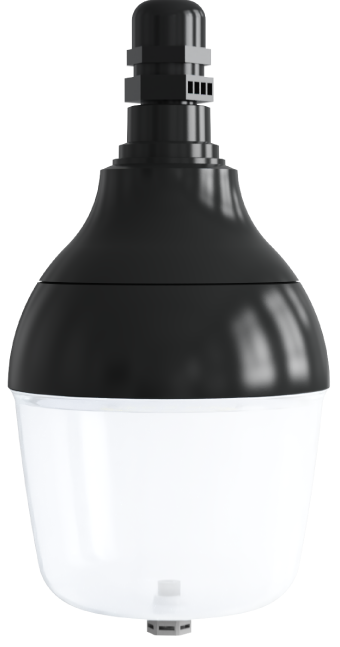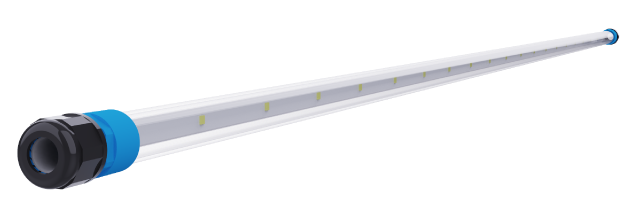Led Chicken Lighting Benefit: Best Light for Chicken Coop

Directory:
1. LED lamps can reduce electricity consumption by over 50%.
2. LED lamps, Adjustable light intensity, consistent brightness
3. LED lamps have a longer lifespan
4. Choosing LED lights for chicken coops
5. Best Light for Chicken Coop
Lighting is essential in the daily operation of chicken farms. To ensure that chickens grow healthily and maximize their production capabilities, it is important to provide them with both natural light and additional artificial lighting. This is particularly true for modern chicken farming operations, which often utilize fully enclosed facilities, making supplemental lighting a standard practice. Traditionally, incandescent bulbs were used for this purpose, leading to significant annual expenses for chicken coops, especially in the current low-profit environment of the poultry industry. In recent years, many farms have started to switch to energy-efficient LED lamps to replace incandescent bulbs in an effort to lower their breeding costs.
What are the benefits of using LED lamps?
1. LED lamps can reduce electricity consumption by over 50%.
LED stands for Light Emitting Diode, and its structure consists of a piece of electroluminescent semiconductor material mounted on a lead frame and encased in epoxy resin for protection. When voltage is applied to the LED's PN junction, it creates energy levels that allow electrons to jump and emit light. LED lamps are now widely used due to their lower power consumption, higher brightness, and longer lifespan compared to traditional light sources. They have gained popularity in the poultry industry, especially in standardized closed chicken farms, where they are increasingly chosen as the primary supplemental chicken lighting option.
For instance, a farm with 50,000 commercial laying hens has replaced one-third of its lighting with LED lamps. After a year of comparison, it was found that LED lamps consume over 50% less electricity than standard energy-saving lamps. Li Ruxing, the general manager of Xiuyuan Animal Husbandry, explained that in a chicken coop housing about 10.000 laying hens, one lamp is installed every 3 meters to meet the lighting needs during the laying period. This requires 80 energy-saving lamps of 10 watts each, but by using 5-watt LED lamps, the same lighting effect can be achieved while saving 50% on energy costs.
Laying hens require 16 hours of light each day during their laying phase. For a chicken coop housing 10,000 hens, it is estimated that 80 lamps are needed at the same light intensity. The daily energy consumption of energy-saving lamps in a fully enclosed chicken coop is 12,800 watt-hours (calculated as 16 hours × 80 lamps × 10 watts), while using LED lamps for the hens results in a daily consumption of 6.400 watt-hours (16 hours × 80 lamps × 5 watts). This means that switching to LED lamps can save 6,400 watt-hours of electricity daily compared to traditional energy-saving lamps, equating to approximately 50% savings.
After making the switch, a farm has replaced all its lighting with LED lamps specifically for laying hens, which have been in use for over two years. Previously, the farm used 9-watt energy-saving lamps, but these have now been replaced with 3-watt LED lamps. Comparisons show that the light output of the 3-watt LED lamps matches that of the former 9-watt energy-saving lamps, adequately fulfilling the lighting needs of the hens during egg-laying. The energy-saving benefits of the LED lamps are significant, achieving over 60% savings in electricity.
In recent years, many chicken farms have been operating with low profit margins, prompting owners to seek ways to cut costs. Energy savings are a crucial consideration for these farms. Currently, some farms pay ¥0.56/kWh for agricultural electricity, while others pay ¥0.75/kWh for sideline electricity. If we assume a rate of ¥0.56/kWh, a chicken coop with 10,000 laying hens could save ¥1,569,79 annually on electricity bills by using LED lighting.
2. LED lamps, Adjustable light intensity, consistent brightness
The light intensity can be modified, ensuring consistent brightness and significantly enhancing the uniformity of the chicken flock. A chicken coop can accommodate 300.000 laying hens year-round, with each coop typically housing around 30.000 birds. The adjustable light intensity of LED lights greatly alleviates the labor demands on workers. The lighting requirements for laying hens differ during the brooding and rearing phases. In a fully enclosed chicken coop, the light intensity for chicks aged 0 to 5 days must exceed 20 lux, while for those older than 5 days, it remains at 20 lux. During the rearing phase, a light intensity of 5 to 10 lux is sufficient for the chickens' growth. LED lights allow for precise control over light duration and intensity. At specific growth stages, a controller can automatically adjust the LED lights to meet the chickens' light intensity needs, minimizing the complexity and potential errors of manual adjustments.
As the animal husbandry industry evolves, the automation of laying hen farming is increasing, with mechanical systems implemented for drinking, feeding, spraying, and egg collection. The installation of this equipment requires lamps in the chicken coop to be mounted higher. In a four-tier chicken cage, the previous incandescent lamps created many dark spots on the fourth tier due to insufficient light intensity, leading to reduced feed intake and negatively impacting the weight gain of the chickens. Consequently, the egg production rate increased slowly during the initial laying phase, and the peak production period was brief. In contrast, the LED lights provide consistent light intensity across both upper and lower cages, allowing the hens in the fourth tier to feed normally, which significantly enhances the uniformity of the flock.
3. LED lamps have a longer lifespan
LED lamps last 5 to 6 times longer than energy-saving lamps. While energy-saving lamps typically last over a year, I have been using LED lamps for my laying hens for over two years now, and they are performing well. However, there is a damage rate of about 7% to 8%. From a cost and benefit perspective for the farm, using LED lamps for laying hens is more economical.
4. Choosing LED lights for chicken coops
As closed chicken coops gain popularity, LED lights are increasingly being adopted in poultry farms, especially in newly constructed facilities. LED lights offer numerous advantages over other lighting options, including energy efficiency, extended lifespan, and consistent light intensity. They also provide a stable light source with minimal flicker, reducing stress on the chickens, and are environmentally friendly, which can enhance the survival rate of the birds.
So, how should farms select the appropriate LED lights for laying hens?
4.1 The spectrum of LED lights must cater to the growth and production needs of laying hens
When selecting LED lights for laying hens, it is crucial to consider the spectrum, as different wavelengths can have varying effects on the birds. Some spectra can promote growth and production, while others may hinder them. Choosing the wrong spectrum can lead to delayed egg-laying, especially with advancements in LED technology that have intensified spectral energy distribution. Unsuitable LED spectra can significantly delay sexual maturity in hens.
4.2 LED lamps should be sealed
The environment in a laying hen coop is often challenging, with high levels of dust and humidity. Therefore, it is essential for LED lamps to have a good waterproof and dustproof rating. If the lamps are not adequately sealed, water and dust can enter, affecting their luminous efficiency and brightness. In severe cases, this can damage the LED lamps, negatively impacting production and leading to financial losses.
4.3 LED lamps should have a sleek design
The chosen LED lamps should feature a smooth design to minimize dust buildup, which can impact their lifespan, while also meeting the product's heat dissipation needs.
4.4 LED lamps must efficiently dissipate heat and utilize high-quality materials
LED products experience some level of light decay, which is primarily influenced by the materials used and their heat dissipation capabilities. Selecting high-quality materials is essential for ensuring that LED products maintain consistent brightness over time. Effective heat dissipation helps prevent heat buildup within the lamp, reduces the aging of the lamp beads, and prolongs the lifespan of the LED lamps. Excessive heat can lead to rapid aging of the LED lamp beads and potential damage to internal components, resulting in increased light decay and failure of the lamps.
5. Best Light for Chicken Coop
5.1 Chicken Coop bulbs D80

The D80 Poultry Lighting Bulb is engineered to provide a high-performance, stress-free lighting solution that supports healthy poultry growth while ensuring energy efficiency and ease of maintenance.
5.2 Chicken Coop light T5

T5 LED Poultry Lighting System provides solution for chickens to increase egg output, lower mortality, longer peak production period and improve animal welfare. By using intelligent poultry LED lighting system for raising chickens, it is beneficial for higher quantity and quality of eggs, maturity at a faster rate and higher standard of health, compared with way of chicken raised under traditional light sources.
5.3 Chicken Coop light T8

T8 LED Poultry lighting system provides solution for chickens to increase egg output, lower mortality, longer peak production period and improve animal welfare. By using intelligent poultry LED lighting system for raising chickens, it is beneficial for higher quantity and quality of eggs, maturity at a faster rate and higher standard of health, compared with way of chicken raised under traditional light sources.